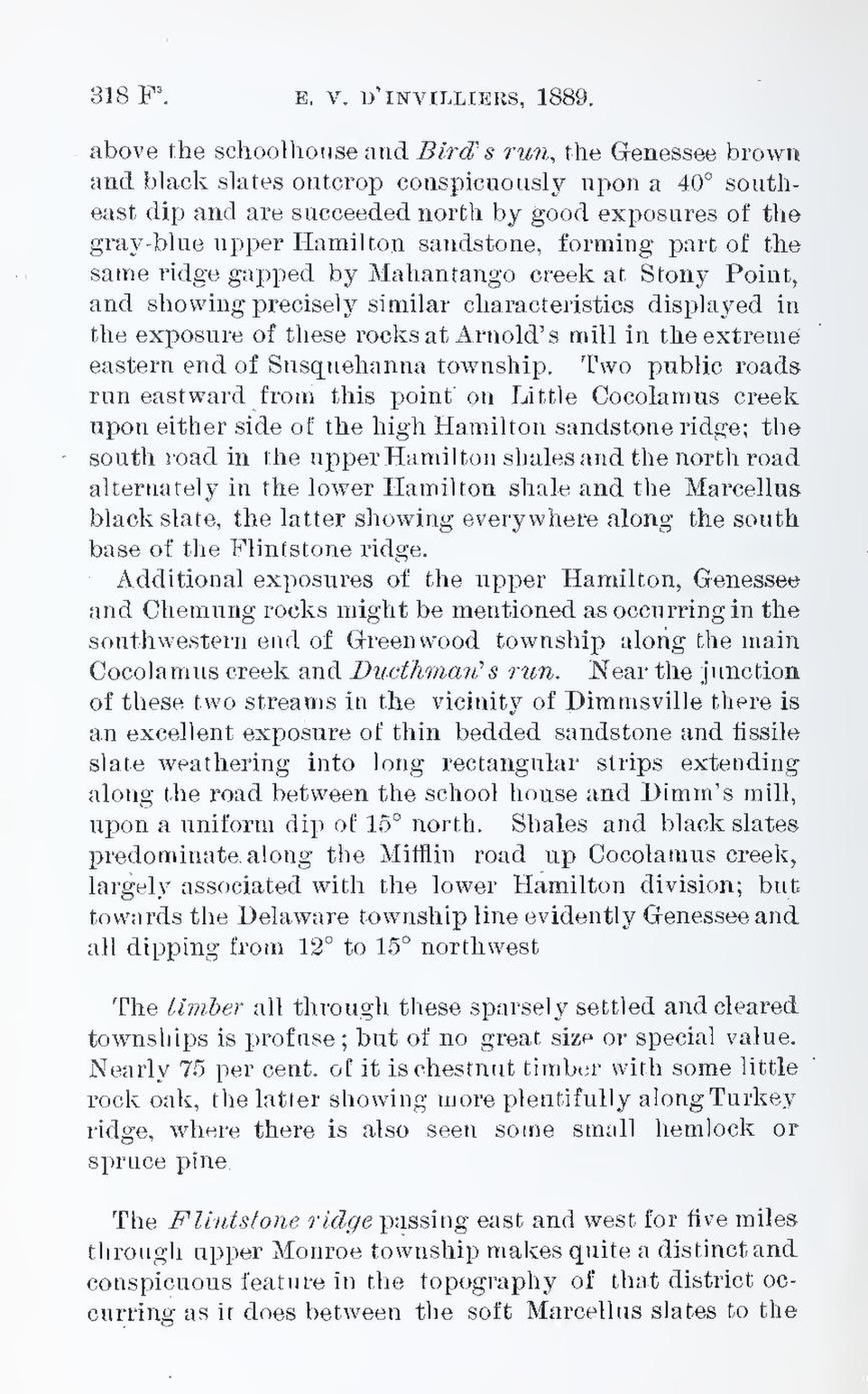above the schoolhouse and Bird’s run, the Genessee brown and black slates outcrop conspicuously upon a 40° southeast dip and are succeeded north by good exposures of the gray-blue upper Hamilton sandstone, forming part of the same ridge gapped by Mahantango creek at Stony Point, and showing precisely similar characteristics displayed in the exposure of these rocks at Arnold’s mill in the extreme eastern end of Susquehanna township. Two public roads run eastward from this point on Little Cocolamus creek upon either side of the high Hamilton sandstone ridge; the south road in the upper Hamilton shales and the north road alternately in the lower Hamilton shale and the Marcellus black slate, the latter showing everywhere along the south base of the Flintstone ridge.
Additional exposures of the upper Hamilton, Genessee and Chemung rocks might be mentioned as occurring in the southwestern end of Greenwood township along the main Cocolamus creek and Ducthman’s run. Near the junction of these two streams in the vicinity of Dimmsville there is an excellent exposure of thin bedded sandstone and fissile slate weathering into long rectangular strips extending along the road between the school house and Dimm’s mill, upon a uniform dip of 15° north. Shales and black slates predominate along the Mifflin road up Cocolamus creek, largely associated with the lower Hamilton division; but towards the Delaware township line evidently Genessee and all dipping from 12° to 15° northwest
The timber all through these sparsely settled and cleared townships is profuse; but of no great size or special value. Nearly 75 per cent. of if is chestnut timber with some little rock oak, the latter showing wore plentifully along Turkey ridge, where there is also seen some small hemlock or spruce pine.
The Flintstone ridge passing east and west for five miles through upper Monroe township makes quite a distinct and conspicuous feature in the topography of that district occurring as it does between the soft Marcellus slates to the
